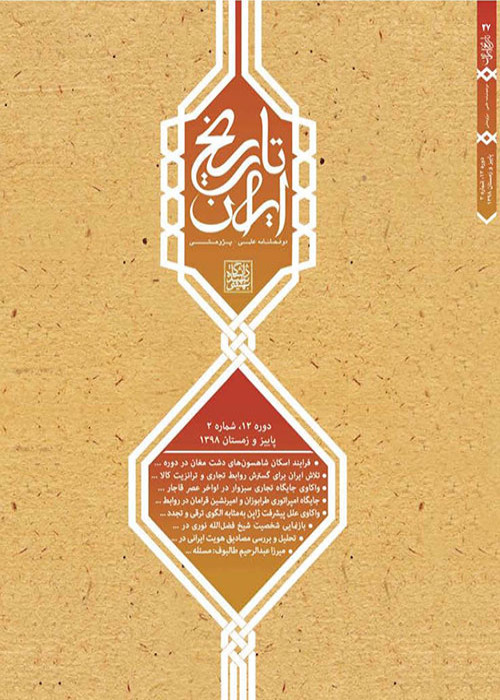Rereading the components of modernity in the Qajar Age based on Tamaddon Newspaper
Author(s):
Article Type:
Research/Original Article (دارای رتبه معتبر)
Abstract:
In the West, Modernity was the product of the enlightenment process that took place within different schools of thought. It began with the Renaissance and continued through the religious-intellectual reformation to the Industrial Revolution. In fact, Modernity was shaped as the product of such a process. Printing, as the medium of information and awareness, played a major role not only in the emergence of the new science, culture, and insight but also in the formation of modernity. Before the Constitutional Revolution in Iran, the components of modernity were already shaped, but upon the emergence of Revolution, some like freedom and Law turned into the major demands of Constitutionalists. The major mass medium of the nation then was the press which, unsurprisingly, played a significant role in the public’s awareness of such components. This, perhaps, is why the present study takes an interest in an analysis of the representations of the components of modernity in Iranian newspapers published in the years between 1902 and 1911. Among all such publications, it is the Tamaddon newspaper which is available now, and is thus consulted in the present study. Twelve issues of the Tamaddon are selected by systematic sampling method, and are then analyzed in terms of variables like components of modernity, attitudes to each element, sources of legitimacy, and connotations. The theorethical basis of the study is a conceptual framework based on the concept of modernity as well as theoretical studies regarding modernity like Mediation Theory and Alternative Modernity. According to the findings of the study, what are chiefly reflected in the Tamaddon include social ideals of the modern man; attitudes towards the components of modernity which are at times different from the westersn models of modernity; religious sources and Iranian traditions which are used as a means of legitimizing argumentations for or against the components; and connotations which speak for the context within which the text was produced.
Keywords:
Language:
Persian
Published:
Journal of Iran History, Volume:6 Issue: 2, 2013
Pages:
55 to 94
magiran.com/p2023258
دانلود و مطالعه متن این مقاله با یکی از روشهای زیر امکان پذیر است:
اشتراک شخصی
با عضویت و پرداخت آنلاین حق اشتراک یکساله به مبلغ 1,390,000ريال میتوانید 70 عنوان مطلب دانلود کنید!
اشتراک سازمانی
به کتابخانه دانشگاه یا محل کار خود پیشنهاد کنید تا اشتراک سازمانی این پایگاه را برای دسترسی نامحدود همه کاربران به متن مطالب تهیه نمایند!
توجه!
- حق عضویت دریافتی صرف حمایت از نشریات عضو و نگهداری، تکمیل و توسعه مگیران میشود.
- پرداخت حق اشتراک و دانلود مقالات اجازه بازنشر آن در سایر رسانههای چاپی و دیجیتال را به کاربر نمیدهد.
In order to view content subscription is required
Personal subscription
Subscribe magiran.com for 70 € euros via PayPal and download 70 articles during a year.
Organization subscription
Please contact us to subscribe your university or library for unlimited access!



